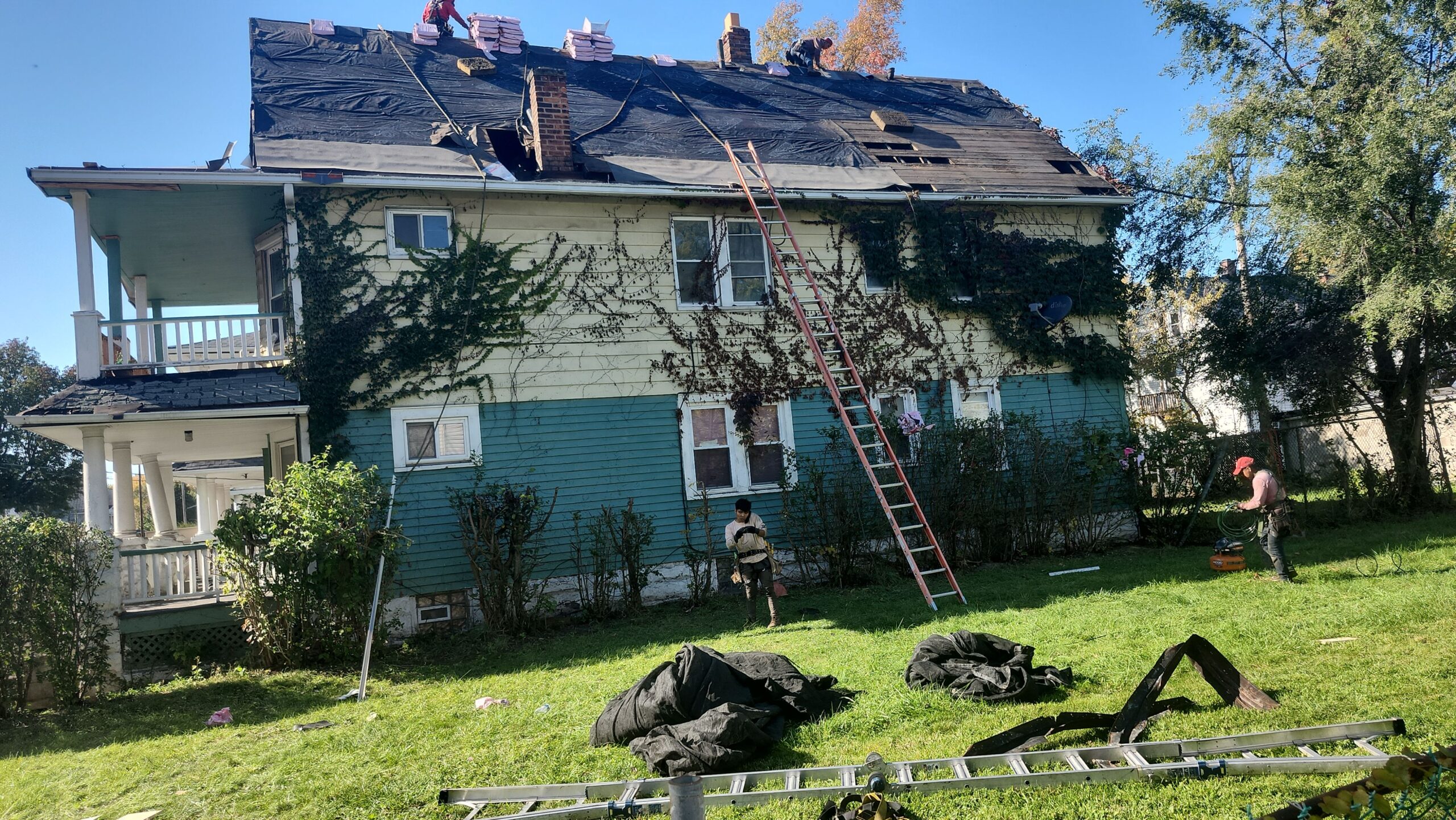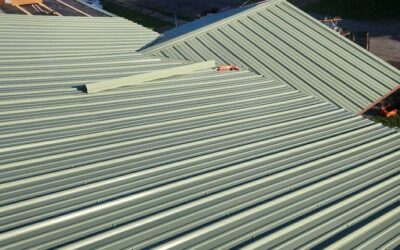Understanding Soffits on a Roof: The Essential Guide to Installation, Maintenance, and Repair
When it comes to maintaining the health of your roof, many homeowners focus primarily on the shingles, gutters, or flashing, overlooking the importance of the soffit. The soffit is an essential part of the roof system, and without it, your home could be at risk of various problems that can lead to costly repairs down the line. In this blog, we will explore everything you need to know about soffits on a roof, from their definition and functions to the materials used and how to repair or replace them.
By the end of this article, you’ll have a deeper understanding of what soffits are, why they matter, and how you can ensure your roof remains in great condition with proper soffit maintenance and care.
What is a Soffit?
A soffit is the material installed under the overhang of your roof, typically covering the area beneath the eaves. It is part of the roof’s structure that is visible from the exterior of the house, completing the roofline by concealing the rafters. Soffits help to create a finished, polished look to the exterior of the house while serving several important functional purposes.
Soffits are usually made from materials such as wood, aluminum, vinyl, or composite materials. They are typically vented to allow for proper airflow into the attic, but non-vented soffits are also available, depending on the specific needs of your roof system.
Functions of Soffits
While soffits may seem like a minor part of the roof structure, they serve several essential functions that contribute to the health and longevity of your home. Let’s break down the various roles that soffits play.
1. Ventilation
One of the most critical functions of soffits is promoting ventilation in the attic. Vented soffits allow fresh air to enter the attic, ensuring that hot, humid air does not build up inside. This constant airflow helps to regulate temperature and moisture levels, reducing the risk of problems such as mold, mildew, and wood rot. In addition, proper attic ventilation prevents the formation of ice dams in winter and extends the life of your roof by preventing overheating in the summer.
The air entering through the soffits typically travels up through the attic and exits through ridge vents or other types of roof vents. This passive ventilation system helps maintain a consistent temperature and prevents the buildup of condensation, which could otherwise cause long-term damage to your roof and attic insulation.
2. Protection from Water Damage
Soffits help protect your home from water damage by shielding the eaves and rafters from rain, snow, and ice. Without soffits, water could easily run down the roof and cause damage to the exterior walls, windows, and landscaping. The soffit acts as a barrier, preventing water from splashing up against the siding or foundation of the house, thus reducing the risk of water infiltration.
In areas with heavy rainfall or snowfall, soffits are especially important in ensuring that water is directed away from the structure. They help maintain the integrity of your roof and exterior elements by diverting water safely off the edge of the roof.
3. Pest Prevention
Soffits also help prevent pests from entering your attic. Pests such as birds, squirrels, raccoons, and insects often try to make their way into the attic through the eaves. Soffits create a barrier that blocks access to these vulnerable areas.
Many soffits are designed with small vent holes that allow for airflow, but these vents are typically covered with mesh or a fine screen to keep out pests. Without soffits in place, pests could easily find their way into your attic, where they may cause damage to insulation, wiring, and wood beams.
4. Aesthetic Appeal
Although soffits are primarily functional, they also serve an aesthetic purpose. Soffits conceal the rafters and other structural elements of the roof, creating a smooth and uniform appearance. The soffit also adds to the curb appeal of the home by completing the exterior’s visual design.
Soffits are available in a wide variety of materials, colors, and finishes, allowing homeowners to choose an option that complements the overall style of their home. Whether you’re going for a traditional look with wood soffits or a low-maintenance option with vinyl soffits, this small detail can make a significant difference in the overall aesthetic of the home.
Types of Soffits
There are several types of soffits available, each offering different benefits and suited to different needs. Let’s take a look at the most common types of soffits used in roofing systems:
1. Vented Soffits
Vented soffits are the most common type used in modern homes. These soffits are designed with small perforations or slots that allow air to flow into the attic. Vented soffits are ideal for homes that need proper attic ventilation, as they help to reduce moisture buildup and temperature extremes.
The perforations in vented soffits can be small or large, depending on the size of the opening needed for proper airflow. These soffits are typically made from vinyl, aluminum, or composite materials and are available in various colors and finishes.
2. Non-Vented Soffits
Non-vented soffits, as the name suggests, do not have perforations for airflow. These soffits are used in homes that do not require attic ventilation or where the ventilation is provided through other means, such as gable vents or ridge vents. Non-vented soffits are typically made from solid materials like wood, aluminum, or vinyl and are ideal for homes in dry climates where moisture buildup is not a concern.
3. Closed Soffits
Closed soffits are a variation of non-vented soffits that do not have any perforations. These soffits are designed to provide a smooth, solid surface along the underside of the eaves. Closed soffits are typically used when aesthetics are a primary concern, or when additional insulation or ventilation systems are already in place.
4. Fascia and Soffit Systems
In some homes, soffits are combined with fascia boards to create a complete roofing system. Fascia boards run along the edge of the roof, covering the rafter ends and providing a solid surface for the soffits to attach to. Fascia and soffit systems work together to provide both functionality and aesthetic appeal, ensuring proper airflow, protecting against water damage, and maintaining a clean and finished roofline.
Materials Used for Soffits
Soffits are made from a variety of materials, each with its own set of advantages and disadvantages. Let’s explore the most commonly used materials for soffits:
1. Wood
Wooden soffits provide a natural, classic look that many homeowners prefer. However, wood soffits are more susceptible to moisture damage, mold, and rot, especially in humid climates or areas with heavy rainfall. To maintain the integrity of wood soffits, they must be regularly painted or sealed to protect them from the elements. Wooden soffits can be an excellent choice for homeowners seeking a rustic or traditional aesthetic but require more maintenance than other materials.
2. Vinyl
Vinyl soffits are one of the most popular choices due to their low-maintenance nature. Vinyl soffits are resistant to moisture, rot, and warping, making them ideal for homes in areas with high humidity or frequent rain. They are available in a variety of colors, styles, and finishes, allowing homeowners to find an option that complements their home’s exterior. Vinyl soffits are also relatively easy to install, making them a cost-effective choice for many homeowners.
3. Aluminum
Aluminum soffits are durable and resistant to weathering, rust, and corrosion. They are often used in coastal regions where exposure to saltwater can cause other materials to degrade more quickly. Aluminum soffits are available in both vented and non-vented options and are easy to maintain. While they may not offer as many design options as vinyl, aluminum soffits are a solid choice for homeowners looking for durability and reliability.
4. Composite
Composite soffits combine the aesthetic appeal of wood with the durability and low-maintenance benefits of synthetic materials. Composite soffits are resistant to moisture, warping, and rot, making them a great option for homeowners who want the look of wood without the added upkeep. Composite soffits are often made from a blend of wood fibers and synthetic materials, offering the best of both worlds.
Common Issues with Soffits
Like any part of your roof, soffits can experience issues over time. Regular inspection of your soffits can help you identify problems early before they escalate into costly repairs. Here are some common problems that can occur with soffits:
1. Rot or Decay
Wooden soffits are especially susceptible to rot or decay if they are exposed to moisture for extended periods. If you notice soft spots or a musty smell around your soffits, it may indicate that water has seeped in, causing the wood to rot. Replacing the affected sections of the soffit is necessary to prevent further damage to your roof structure.
2. Mold or Mildew Growth
Mold and mildew growth can occur in soffits that are not adequately ventilated. This is especially common in homes with poor attic ventilation. If you see black spots or a musty odor around your soffits, it could indicate mold or mildew growth. Cleaning the soffits and improving attic ventilation will help resolve the issue.
3. Pest Infestations
If your soffits are damaged or have holes, pests such as birds, squirrels, or insects may gain access to your attic. Inspect your soffits regularly to ensure that they are intact and free of gaps. Sealing any holes or cracks promptly will help prevent pest infestations.
4. Sagging or Loose Soffits
If your soffits are sagging or appear to be pulling away from the roofline, it could indicate that they were not installed correctly or have been damaged over time. Sagging soffits should be repaired or replaced as soon as possible to prevent further damage.
How to Repair or Replace Soffits
If you notice any of the issues mentioned above, it’s important to address them quickly to prevent further damage. Depending on the severity of the problem, you may be able to repair the soffits yourself, or you may need to call a professional.
1. Inspect the Damage
Before repairing or replacing soffits, take the time to inspect the damage. Look for cracks, holes, sagging, or signs of mold and mildew. Determine whether the damage is localized to one section or if it affects the entire soffit system.
2. Remove the Old Soffit
If you need to replace the soffit, carefully remove the old material. Use a pry bar to detach the soffit from the fascia board, and remove any nails or screws that may be holding it in place. Be cautious not to damage the fascia or roof structure during this process.
3. Install the New Soffit
Once the old soffit is removed, measure and cut the new soffit to fit the space. If you’re installing vented soffits, ensure that the perforations align properly for adequate airflow. Secure the new soffit with nails or screws, and make sure it is properly aligned with the fascia board.
4. Seal and Finish
After installation, seal any gaps or seams to prevent water from entering the attic. If you’re using wood soffits, apply a coat of sealant or paint to protect the material from the elements. Regularly inspect your soffits to ensure they remain in good condition.
Conclusion
Soffits play a crucial role in maintaining the health of your roof and home. They provide ventilation, protect against water damage, prevent pest infestations, and contribute to the overall aesthetic appeal of the house. Regular inspection and timely repairs can help ensure that your soffits continue to function properly for many years.
Whether you’re dealing with a minor issue like mold or a more significant problem such as sagging soffits, addressing these issues quickly can save you money in the long run. If you’re unsure about repairing or replacing soffits yourself, don’t hesitate to contact a professional roofing contractor who can help ensure that the job is done correctly.
By understanding the importance of soffits and how to maintain them, you can help protect your home and extend the life of your roof.
 (440) 307-2060
(440) 307-2060


